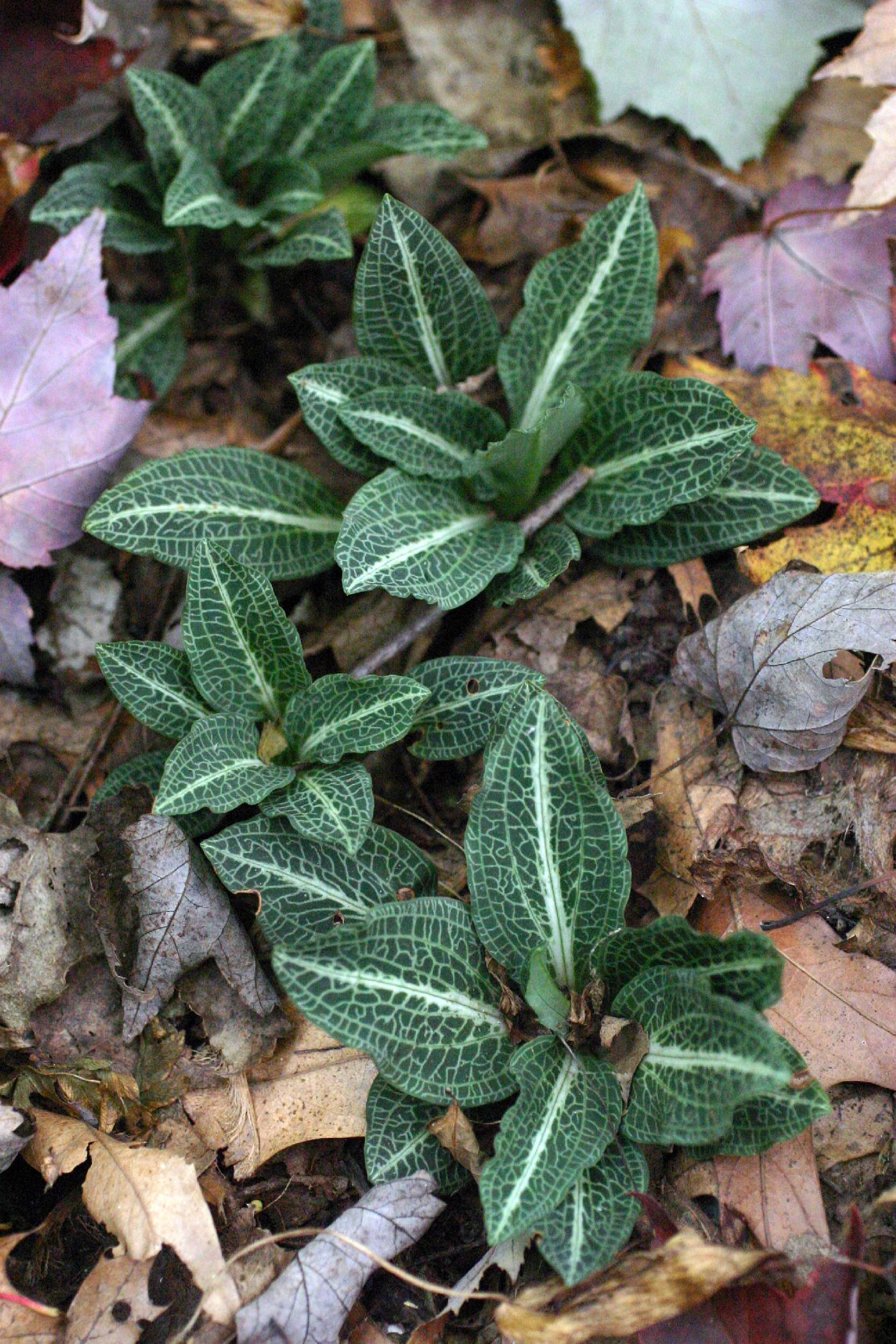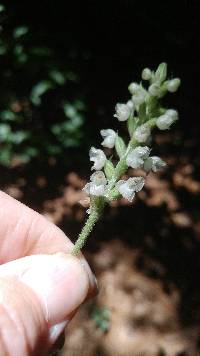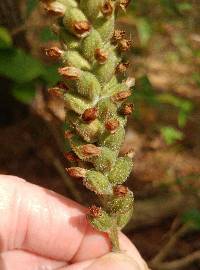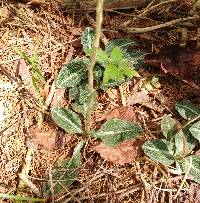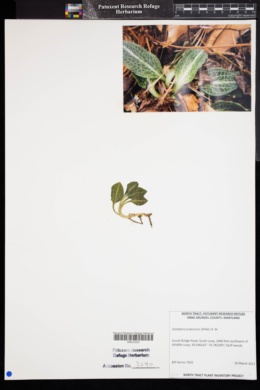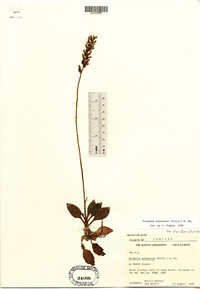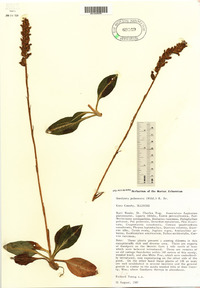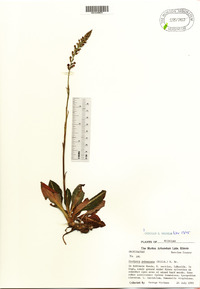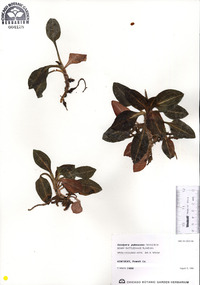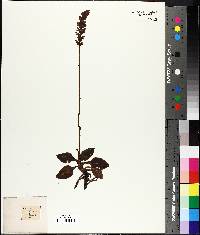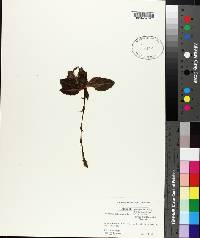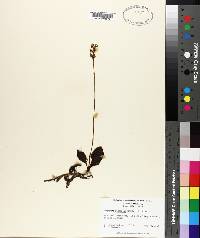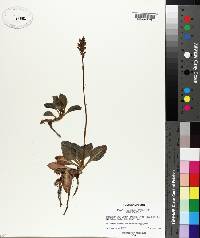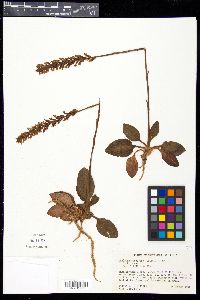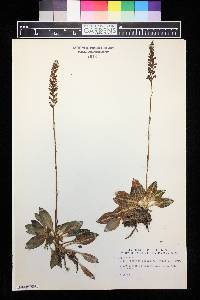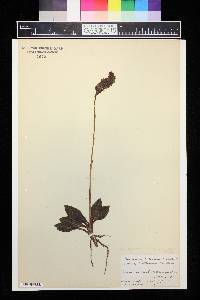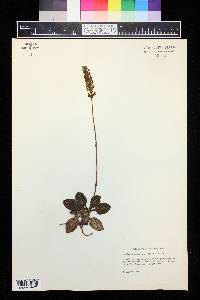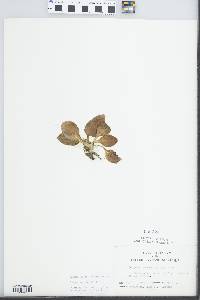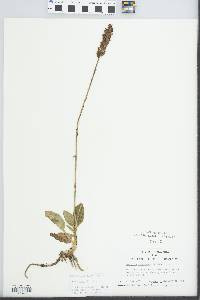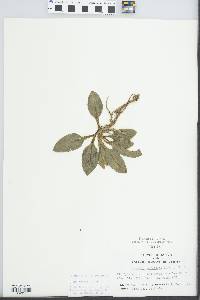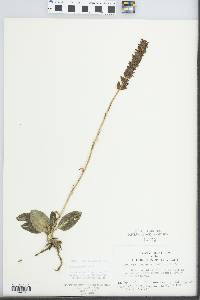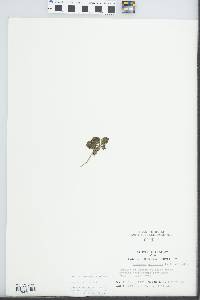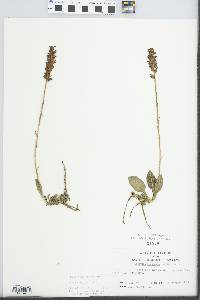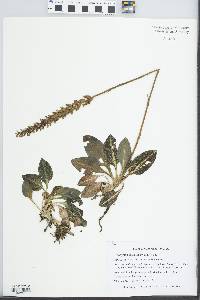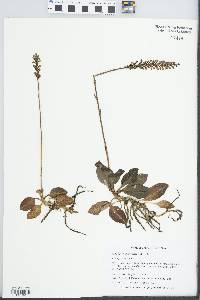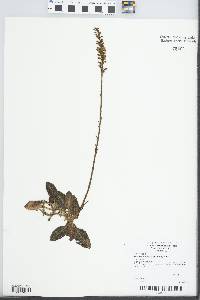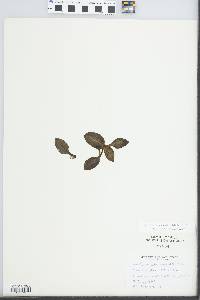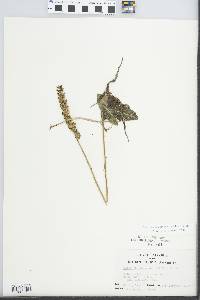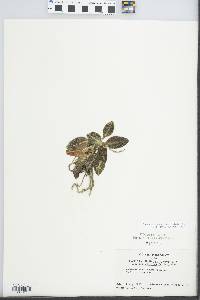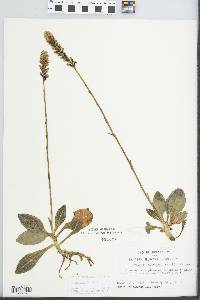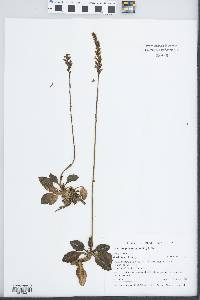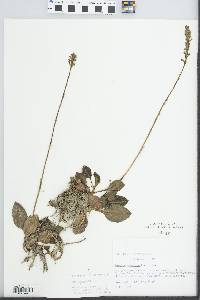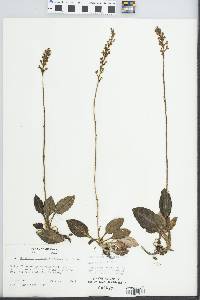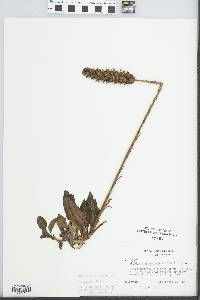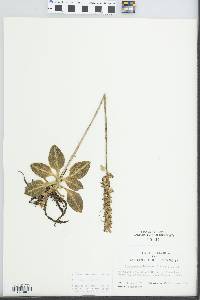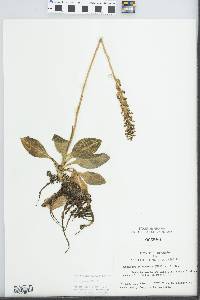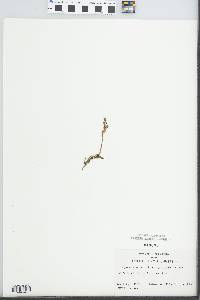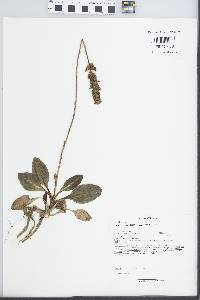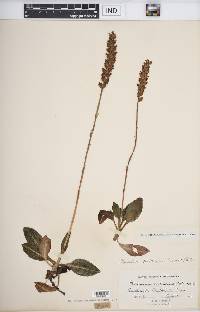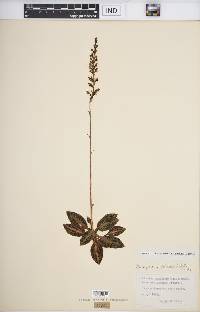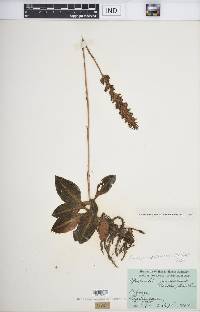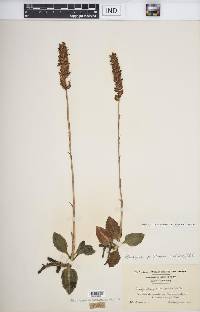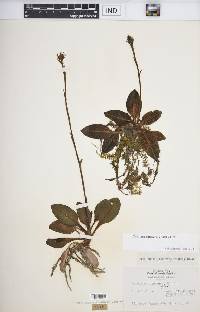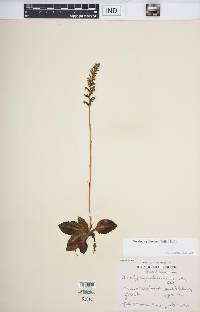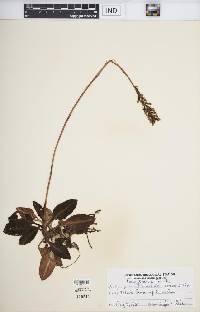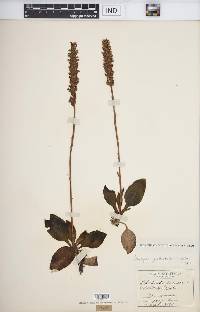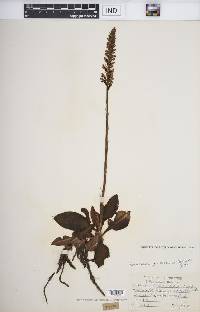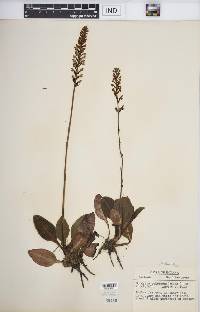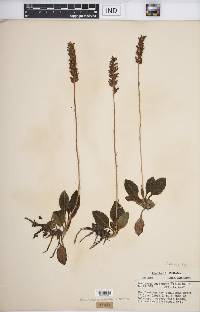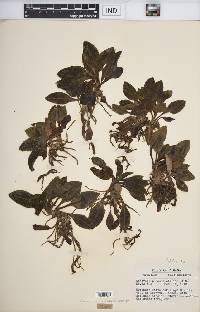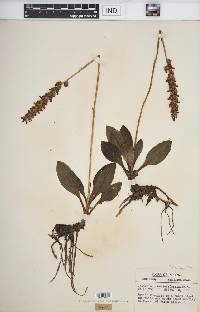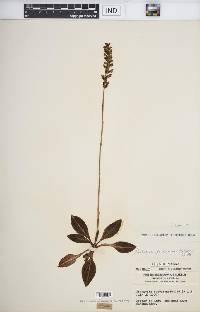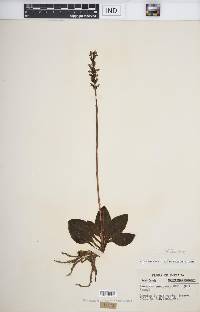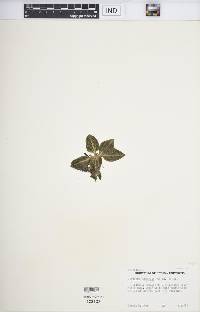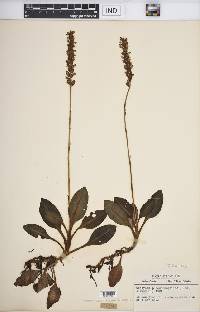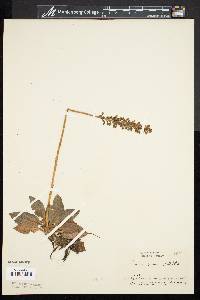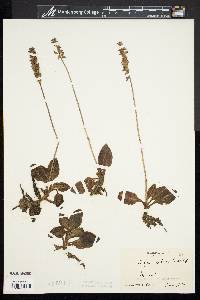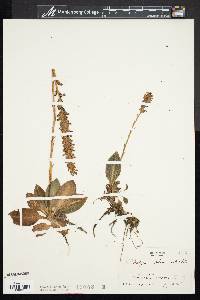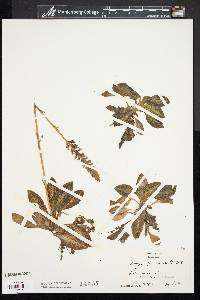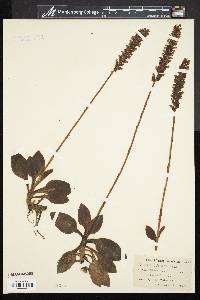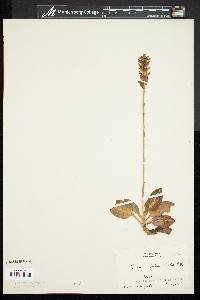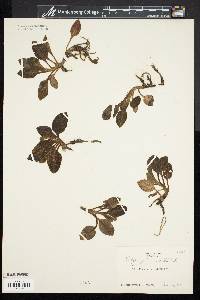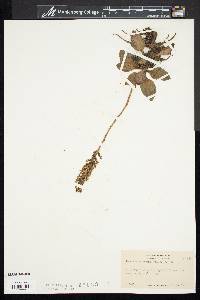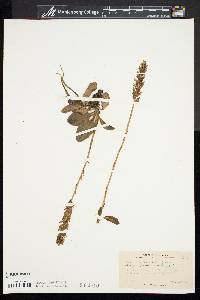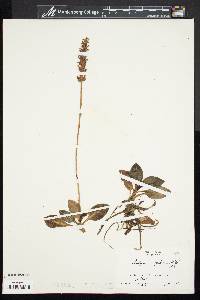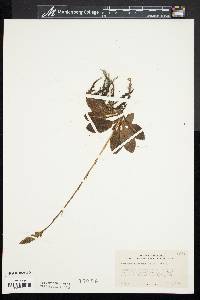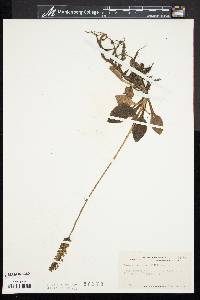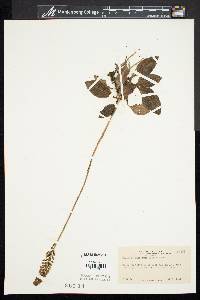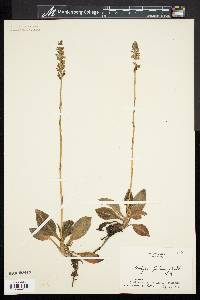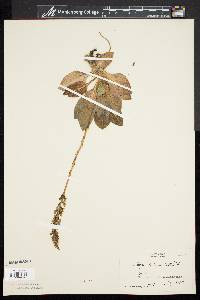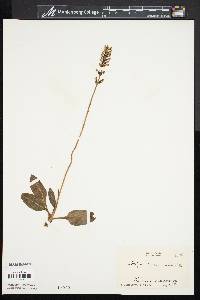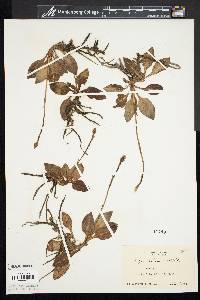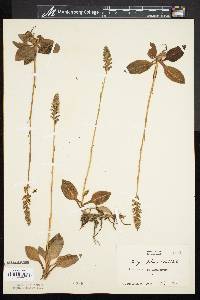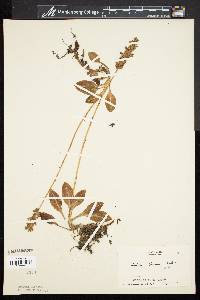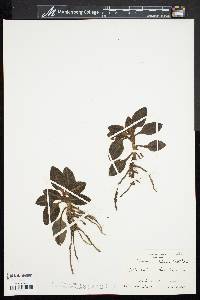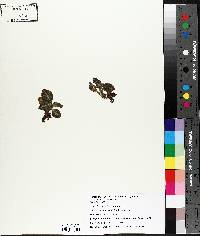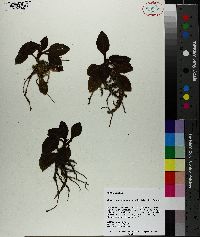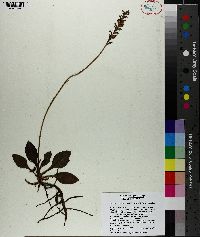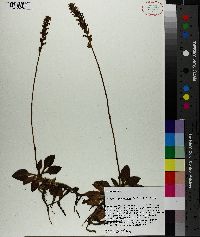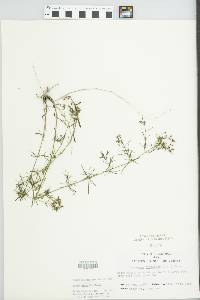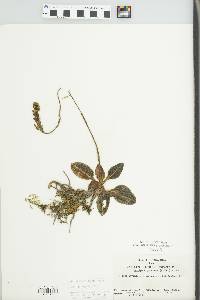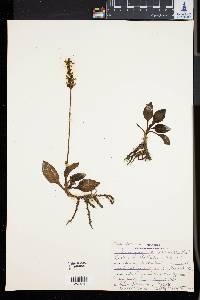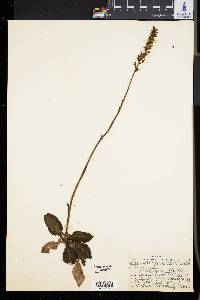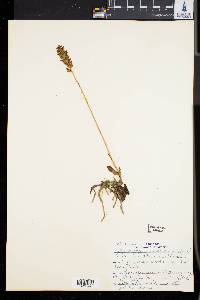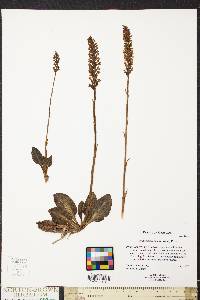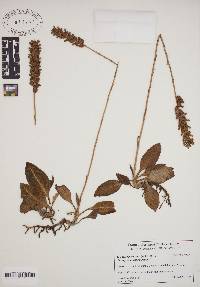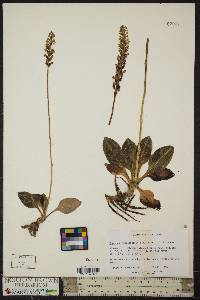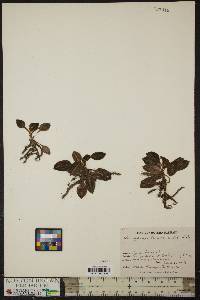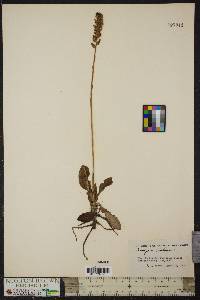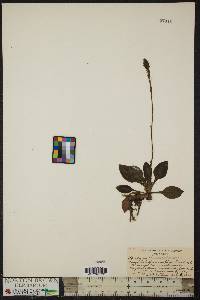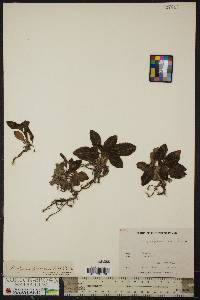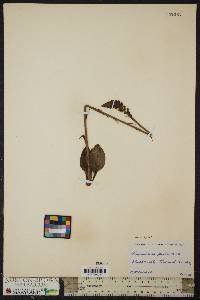Goodyera pubescens
|
|
|
|
Family: Orchidaceae
Downy Rattlesnake-Plantain, more...downy rattlesnake plantain
[Tussaca reticulata Raf.] |
Leaves: blade distinctly lined with white or greenish white on veins throughout, broadly elliptic to broadly ovate, 2.1-6.2 × 1.3-3 cm, apex acute or obtuse. Inflorescences 10-57-flowered, cylindric (equally dense on all sides); peduncle 11-35 cm. Flowers: lateral sepals 3.1-5.3 mm; petals distinct; hood 3.6-5.7 mm; lip scrotiform, 2.5-4.2 × 2.2-3.5 mm, apex reflexed, outer surface slightly tuberculate, inner surface with somewhat thickened veins, without glandular processes; anther inflexed, immersed in cup-shaped clinandrium, apex blunt; pollinia blunt; rostellum with marginal notch 0.1-0.4 mm deep; viscidium orbiculate. 2n = 26. Flowering mid Jul--early Sep. Almost any wooded habitat with acid surface conditions; most frequent on moist humus soils in shady, upland woods of hemlock, pine, oak, or maple, less frequent in lowland woods, bogs, swamps; 0--1600 m; N.S., Ont., Que.; Ala., Ark., Conn., Del., D.C., Fla., Ga., Ill., Ind., Iowa, Ky., Maine, Md., Mass., Mich., Minn., Mo., N.H., N.J., N.Y., N.C., Ohio, Okla., Pa., R.I., S.C., Tenn., Vt., Va., W.Va., Wis. Goodyera pubescens is very different in its lip and column morphology, phenolic constituents, and chromosome number (2n = 26) from other North American Goodyera species, indicating that it is not closely related to them.
Perennial herb 10 - 40 cm tall Leaves: five to eight, alternate in a basal rosette, broad-stalked, dark green with prominent white veins, non-toothed, hairless, 2 - 6.5 cm long, 1 - 4 cm wide, broadly egg-shaped to oblong-elliptic with narrowed blunt-pointed tips. The leaves are evergreen and last for several seasons. Inflorescence: a single, erect, terminal, long-stalked, downy-hairy, tight cylindric spike of fifteen to fifty-five flowers with each flower subtended by a linear to narrowly lance-shaped bract about 6 - 8 mm long. Flowers: stalkless, white, small (about 1 cm long), glandular-hairy on outside, bilaterally symmetric but globose or ball-shaped with one petal formed into a sac-like lip, but lacking a basal spur. The reproductive parts of stamens, stigma and style are fused into a short, beaked column above the inferior ovary. Sepals: three, petal-like, curving forward, white with green central vein and tip, egg-shaped, 3 - 5 mm long, and 3 - 4 mm wide. The tips of the two lower lateral sepals flare outwards, while the central, more oblong-elliptic, beaked upper sepal curves forward and converges with the lateral petals to form a hood over the column and lip petal. Petals: three, white, with two oblong, 3 - 6 mm long, 2 - 3 mm wide upper petals converging with upper sepal to form a hood above modified lip petal. The 2.5 - 4 mm long, 2.5 - 3.5 mm wide lip has a wide, bulbous sac-shaped base with a prolonged, boat-shaped beak with a cleft near the reflexed tip. Fruit: several, stalkless, tightly packed, round, globular, hairy capsules with remnant floral parts at tip, and opening along three lengthwise angular ribs. Flowering stem: single, erect, downy-hairy, leafless but with short, lance-shaped sheaths in lower half below inflorescence. This leafless structure terminated by flowers is called a scape and technically is not a true stem. Root system: of a few, thick, fleshy, fibrous, hairy true roots arising from a branching, creeping rhizome. Similar species: Goodyera pubescens superficially resembles members of the genus Spiranthes due to the shared characters of a tight spike-like inflorescence of white flowers, but in that genus the lip petals are not deeply cup-shaped, and at flowering time they either lack leaves or if present, they are obviously longer than wide and never dark green with white veins. Outside of the Chicago Region, the most similar species is G. tesselata, but it has narrower, bluish green leaves with light green veins, and the lip petal is narrower. The other two North American species of Goodyera, G. oblongifolia and G. repens have looser one-sided or spiraled inflorescences, plus the flowers of the former are more greenish on the outside, and in the latter the leaves are much smaller (only 1 - 3 cm long). Flowering: late July to August Habitat and ecology: Uncommon, local in shaded acid ground typically on sandy, somewhat sterile substrates. Requiring shade, it is generally found in mesic flatwoods, mesic to dry-mesic upland forests, and even moist bogs. Occurence in the Chicago region: native Notes: There are about 25 species of Goodyera worldwide, but only four in North America, and only one in the Chicago Region though the three others occur as close as northern Michigan and northern Wisconsin. Differences in the morphology of the lip and column, composition of particular chemicals (phenols), and chromosome number of G. pubescens indicate this species is not closely related to the other three North American species. It is pollinated by a type of "mining bee", Augochlorella striata, (Homoya 1993). Often this plant can be found as compact colonies of the leaf rosettes. The striking dark evergreen leaves with the netted pattern of white veins make this plant exceptionally vulnerable to harvesting for trade in terrarium and other decorative bowl garden kits. The leaves also form part of the basis for the common name "rattlesnake plantain" due to the netlike veins resembling the vein patterns on a snake's head. The reference to plantain derives from the general appearance of a basal rosette of leaves and an elongate, erect, tight inflorescence as in plantains, members of the genus Plantago. Etymology: Goodyera is named after English botanist John Goodyer (1592-1664). Pubescens means hairy, usually with soft, downy hairs, which refers to the hairiness of the inflorescence. Author: The Field Museum Stout, 2-4 dm; scape with 4-14 (avg 7) bracts; lf-blades ovate or lance-ovate, 3-6 cm, the dark green midrib flanked by a pair of broad white stripes, and the primary and secondary lateral veins forming a white reticulum; infl dense, cylindric, 4-10 cm; galea broadly elliptic, very convex, 4-5.5 mm, upturned at the tip; lateral sep broadly ovate to obovate, 3.5-5 mm, abruptly short-acuminate; lip subglobose, 3.5-5 mm, its straight beak less than 1 mm, scarcely projecting beyond the ventricose body; rostellar beak obsolete; 2n=26. Dry woods; s. Me. and s. Que. to Minn., s. to S.C., Ga., Ala., and Ark. July, Aug. (Epipactis p.; Peramium p.) Gleason, Henry A. & Cronquist, Arthur J. 1991. Manual of vascular plants of northeastern United States and adjacent Canada. lxxv + 910 pp. ©The New York Botanical Garden. All rights reserved. Used by permission. From Flora of Indiana (1940) by Charles C. Deam Local in many parts of the state where its habitat exists. It generally prefers a deep humus soil that is slightly acid. I have seen it as a common plant on residual sandstone soil in Clay and Crawford Counties and only a few plants in a colony here and there in sandy soil in black oak woods. In addition to the distribution shown on the map it has been reported from Lake, Putnam, and Vigo Counties. ...... Indiana Coefficient of Conservatism: C = 5 Wetland Indicator Status: FAC |

